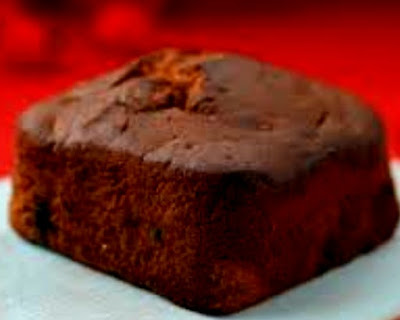Those who have read my post on Goan cuisine yesterday must be wondering why I did not mention a single sweet in the list of specialities. Is it because I was so caught up on the main course that I forgot to order dessert or don’t we Goans have the proverbial sweet tooth?
Well, the answer to that is neither. We Goans have not just one sweet tooth, but multiple sweet teeth (ok sorry, excuse the poor pun).
And so today I present to you an extension of yesterday’s post, that I'd been saving for today's alphabet of the #BlogchatterA2Z series. D for 'Desserts'.
So before I sound like Chunni Babu from the much acclaimed 'Devdas', let me distract you with a list.
A list of delectable desserts you must try when in Goa:
1)
Pasteis de Nata (or Pastel De Nata) is a Portuguese tart pastry filled with egg custard. The outer puff pastry is baked to a crisp brown and dusted with cinnamon. It was originally created by the catholic monks in Lisbon, who following the liberal revolution of 1820, started selling the confectionary Goa nearby sugar refinery to bring in revenue. When the monastery closed in 1834, the monks sold the recipe to the sugar refinery who then opened Fábrica de Pastéis de Belém and is safeguarded there even today.
However, this gastronomic wonder (of Portugal) is attempted by a few eateries even in Goa, the best among them being the Jila bakery of loutolim.
2) Serradura ('sawdust pudding') Originally from Portugal, this dessert became famous in Macau when the Portuguese colonised it.
Since Goa was also a Portuguese colony, the dessert became popular here as well. Soft and creamy, Serradura is made by layering whipped cream, condensed milk, and Marie biscuits (crushed to render it a sawdust texture).
3)
Dodol - a thick creamy brown pudding made using coconut, jaggery, and rice flour made commonly in Catholic homes during Christmas and is an important constituent of Kuswar (Christmas Consoeda) in Goa.
3)
Bibinca - a multilayered (7 to16 layers) egg-based Goan dessert that is made mainly of flour, sugar, clarified butter, egg yolk, and coconut milk. Best served ala mode. The origin can be traced back to Portuguese . Legends claim that it was Sister Bebiana, a Portuguese nun in the 17th century that invented bibinca, and hence the name.
4)
Bolinhas - Goan cookies made from semolina and coconut. These are crisp on the outside and soft inside. Usually had as a tea-time snack but is included in Kuswar along with Bibinca, Doce, Dodol, and other sweets.5)
Plum cake - not to be mistaken with fruit cake or rum cake (other popular varieties of cakes in Goa), the plum cake is a dense non-boozy cake that has a distinct flavour of candied orange rinds and blackened sugar.For the vegetarians:
6)
8) Tavsali - a delicious Cucumber cake, traditionally made in Goa, with rawa, coconut, and jaggery.
9) Dhonas - jackfruit cake similar in preparation to Tavsali but made of jackfruit pulp instead of Ragi.
10) Kelyacho halvo - a Goan dessert made by caramelising thin Banana (Myndoli type) slices in sugar and ghee.
11)
Neuryo - similar to the Maharashtrian karanji, the Goan Neuryo is a common traditional sweet made for both Hindu and Catholic festivals like Ganesh Chaturthi, Diwali, and Christmas.12) Mangane - a traditional Goan kheer made using sabudana, chana dal, cane jaggery, and coconut milk.
13) Kangachi kheer - Made mostly on Gudi Padva, this is a kheer made of sweet potato, coconut milk, jaggery, and rice.
14)
Patoleo - Prepared with rice (outer covering), coconut and jaggery steamed in turmeric leaves. Made usually on Nag Panchami, Ganesh Chaturthi, and feast of the Assumption of Mary, this is a traditional Goan sweet loved by all Goans.And the list goes on…
Initially I had decided to restrict myself to just five Goan desserts. But as I wrote, I realised I could do an entire A-Z only on Goan sweets and desserts and there still would be some remaining.
Whether enumerating or enjoying, when it comes to desserts, we Goans really don’t know when to stop.
And for this sweet privilege, we, in all humility, have just one thing to say; ‘Obrigado, Goa!’
I’d love to know your favourite Goan dessert, or what you think should be added to this list. So do leave a comment to tell me you were here.
And don’t forget to join in tomorrow for yet another riveting feature of Goan life.
Until then,
Mog aasu Di.
(Let there be love!)
--------------------
I’m participating in #BlogchatterA2Z.
My theme for the challenge is ‘Obrigado, Goa!’, under which I’ll be writing 26 posts on Goa (April 1-30th, excluding Sundays), each post corresponding to the letters of the English alphabet. You can read more about it in my theme reveal post.







.jpg)



4 comments:
Wow! This is an excellent list of Goan sweets/desserts. Thanks for reminding me of Peraad...that used to be my absolute favourite! And the neuros. And the dodol. And the tavshali .... oh dear, my list could go on too! :)
Priyanka, I must come over to relish all these sweets at your house. When can I come?
I'm glad my post sent you down memory lane, Radhika.
As a kid, peraad used to be my favorite too. Until I realized its not exactly the healthiest (what with the copious amount of sugar that goes in it). Still, one can indulge every now and then, no? ;)
Aww...you're most welcome, Anagha. :)
Post a Comment